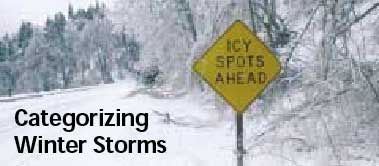
Reproduced from UMaine Today, Volume 3, Issue 1, January/February 2003
Predicting the impact of a winter storm in the eastern and central United States can be treacherous. How quickly it strengthens, where it goes and how fast it travels can mean the difference between shoveling few inches of snow and being stuck in the driveway.
Greg Zielinski, Maine state climatologist and a research professor in the University of Maine Climate Change Institute, has developed a way to help weather forecasters and the public understand the likely effects of winter storms. He has categorized their severity on a scale of 1 to 5, with 5 being most intense. Zielinski applies the classification to two types of storms: nor'easters that often intensify in the mid-Atlantic region and move up the coast into New England; and intense storms sometimes called the Witches of November that originate east of the Rocky Mountains and move through the Great Lakes region or up the Ohio River Valley.
›"We have classification schemes for tornadoes and hurricanes," says Zielinski. "Why not for winter storms? With my classifications, the potential impact of a storm can then be passed on to public service officials so they can make plans for precipitation amounts, particularly snow, snowfall rates, wind speeds, drifting potential and overall impact on schools, businesses, travelers and coastal communities."
›Zielinski's approach uses two features of a storm. He calculates characteristics of air pressure, which reflects storm strength, and forward speed, because even moderately intense storms can have a large impact if they move slowly. For example, a 1969 storm that stalled above Cape Cod for two days dumped more than 8 feet of snow on top of Mt. Washington in New Hampshire. Conversely, the cumulative impact of strong storms may lessen if they move through an area quickly. That was the case in New England with the March 1993 "Storm of the Century."
Zielinski is using his scale in a historical investigation of New England's climate. He has classified more than 70 storms of the past, including the Great Arctic Outbreak of 1899, the Blizzard of 1888 and other storms that are part of U.S. weather lore.
A December 2000 storm was the most intense found in his study.
Zielinski hopes to compare storms and look for patterns in the more than 100 years of scientific weather records.
